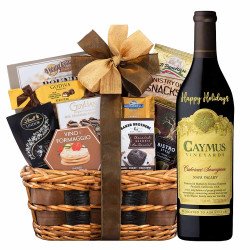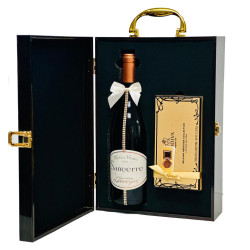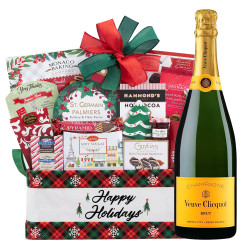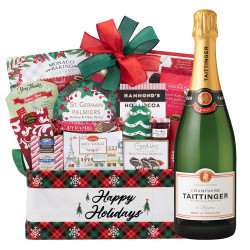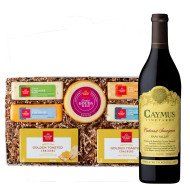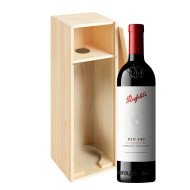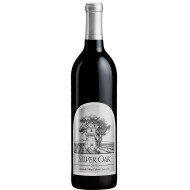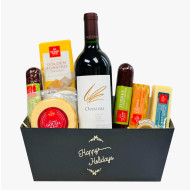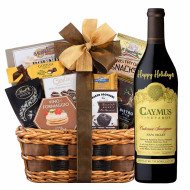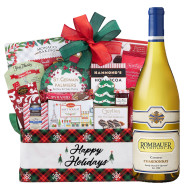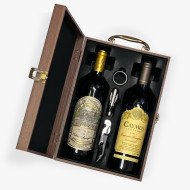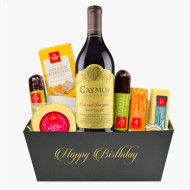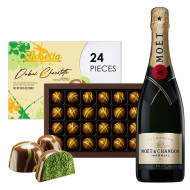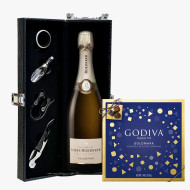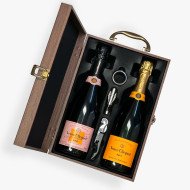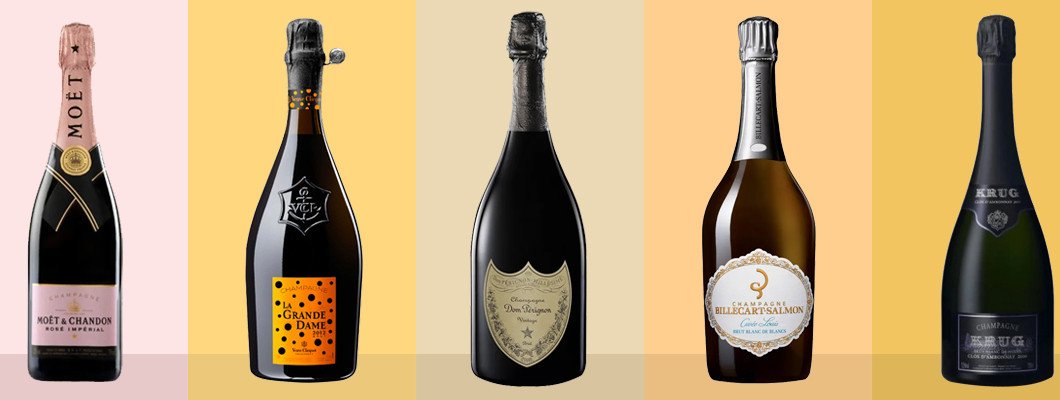
Types of Champagne - Styles, Sizes, Dosages, Prices and More
A laid-back sippin or a cozy Sunday brunch can be truly relished with a glass of fine red or white wine. However, for those finer moments in life—whether it’s a moment of self-pampering or a milestone celebration like Christmas or promotion—nothing elevates the occasion quite like a glistening glass of bubbly.
Yet, when it comes to celebratory champagnes, they can be intricate to understand due to their numerous personalities. As many as there are names of champagne bottles, their identities are even more manifold to grasp, from their own unique craft, style, taste, and effervescence.
In this blog, we will take a deep dive into the world of champagne types, answering how many types of champagne are there. This exploration aims not only to polish your knowledge but also to hone your skills in choosing the perfect bottle of bubbly based on your preferences or the ambiance of a particular occasion, whether it is relaxed or engaging, formal or informal!
Table of Content
- Are Different Champagne Types Produced Differently?
- What Grapes Are Used For Different Champagne Types?
- Champagne Types Based on Styles of Their Production
- Champagne Types As Per Their Sweetness Levels
- Champagne Types As Per Champagne Bottle Sizes
- What Determines a Champagne Bottle Price?
- Final Thoughts On Champagne Types
- Popular Champagne Brands
Firstly, Are Different Champagne Types Produced Differently?
No matter how wide the spectrum of champagne types may be, they are all crafted using the same method, known as the "traditional method" or "methode champenoise", which involves a two-step fermentation process. This craft demands meticulous attention, where unwavering dedication and perseverance result in the creation of champagne’s exquisite personality.
Interestingly to armor the integrity of champagnes, the Champagne region of northern France holds the prestigious status of a Protected Designation of Origin (PDO) and is a legally recognized appellation of origin. This means that only sparkling wine produced in the Champagne region of France can bear the coveted title of "Champagne".
What Grapes Are Used For Different Champagne Types?
To put it simply, there is no defined segregation of grape varietals for different champagne types. However, as per regulations, only selected grape varieties are permitted to produce a bottle of champagne, totaling seven in number. Each grape varietal possesses its own unique characteristics and contributes a distinct layer of pleasure to the champagne. These varieties are carefully blended in precise proportions to achieve the desired style.
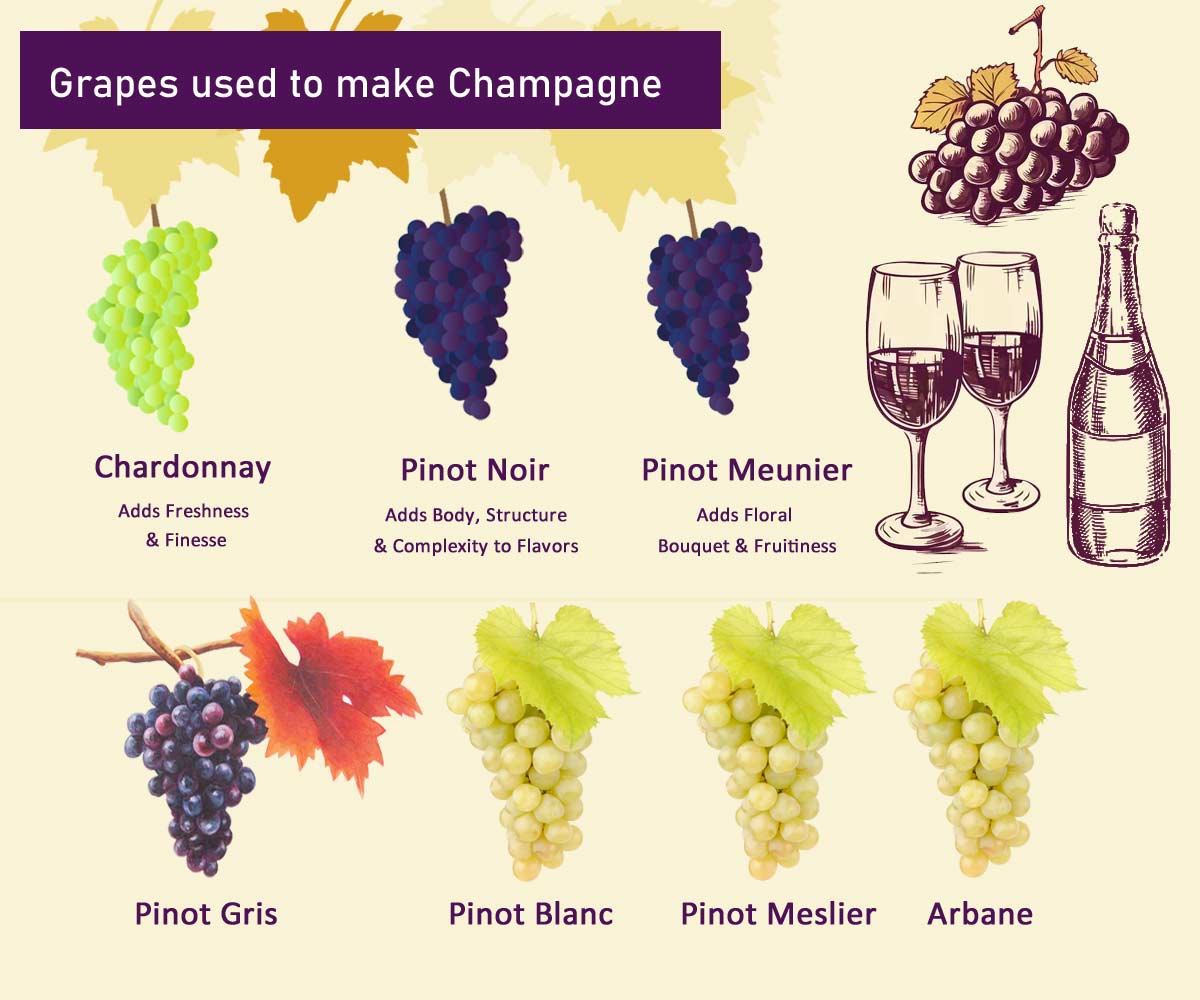
Main Grape Varieties:
In the production of champagnes, there are three core grape varieties used; to an extent, the other four are often overlooked by drinkers. Those are chardonnay, pinot noir, and pinot meunier, and they are preferred for their ability to exude a good balance of sugar and acidity to complement the effervescence, a rich, subtle taste.
Chardonnay: Chardonnay is the primary white grape variety used in crafting champagnes. This varietal ripens easily, thrives in the chalky terroirs of the Champagne region, and helps wines age well. Its magical touch is to give the champagne remarkable freshness, crisp acidity, and a soothing bouquet with mesmerizing notes of floral, citrus, and mineral.
Pinot Noir:As a dominant black grape variety, pinot noir enhances the body, structure, and complexity of flavors in champagne, mainly imparting red fruits and floral notes. This grape varietal also ripens easily in chalky areas, contributes to the richness and depth of champagne, and is frequently used in the production of rosé champagnes.
Pinot Meunier: Lastly, Pinot meunier is a primary black grape varietal with the beauty of exuding fruitiness, roundness, and floral aromas to the champagnes. The best part is that this varietal is least suspected to frost due to its late budding period and is extremely compatible in chalky soils.
Remaining 4 Grape Varieties:
As we discussed, three core grape varieties are traditionally used to produce champagnes. In addition to these, four other varieties are rarely used, accounting for a mere 0.3% of the vineyard area. These less common varieties are somewhat less preferred due to their lower regulation, reduced demand, lower yields and susceptibility to harsh weather, diseases and pests. Here are:
- Arbane - Adds finesse to the bubbly, as well as floral and fruity notes.
- Petit Meslier - Embraces the bubbly with a smokey bouquet.
- Pinot Blanc - Low in acidity, it instills strong, smoky, nutty notes.
- Pinot Gris - Gives a punch and body to the bubbly.
So, it is safe to say that different champagne types will exhibit different characteristics, depending on the proportion of these grape varietals in their blend.
A champagne with a high portion of chardonnay will taste crisp and elegant, one dominant with pinot noir will be bold and robust and lastly, with pinot meunier, it will have a fruity and approachable profile. Lastly, those majorly rushed with secondary grape varieties will exude their prominent characteristics.
Champagne Types Based on Styles of Their Production:
Aside from the grape varieties used, champagnes are crafted in a diverse array of styles. Each style follows its own distinct set of techniques, while collectively, they adhere to the traditional method of champagne production, known as the "methode champenoise". Surprisingly, the focus here is not on grape varieties but on how they are employed in the production of champagne.
When you examine a champagne’s grape composition, you’ll find that it greatly influences its style, adding to its individuality and distinguishing it from others.
Here, we’ll explore the various champagne types based on style:
Vintage: Vintage champagnes are considered the cream of the crop in the world of sparkling wines. The vintage style involves crafting champagne from grapes harvested from a single exceptional year, capturing the essence of that harvest in each drop.
Vintage champagnes are typically aged for longer periods, making them famous for their complexity and nuanced flavors. Also, the champagne bottle price of a vintage is usually higher than that of a non-vintage. To spot a vintage champagne easily,look for the label that reads “ "Millésimé" followed by the year of the harvest.
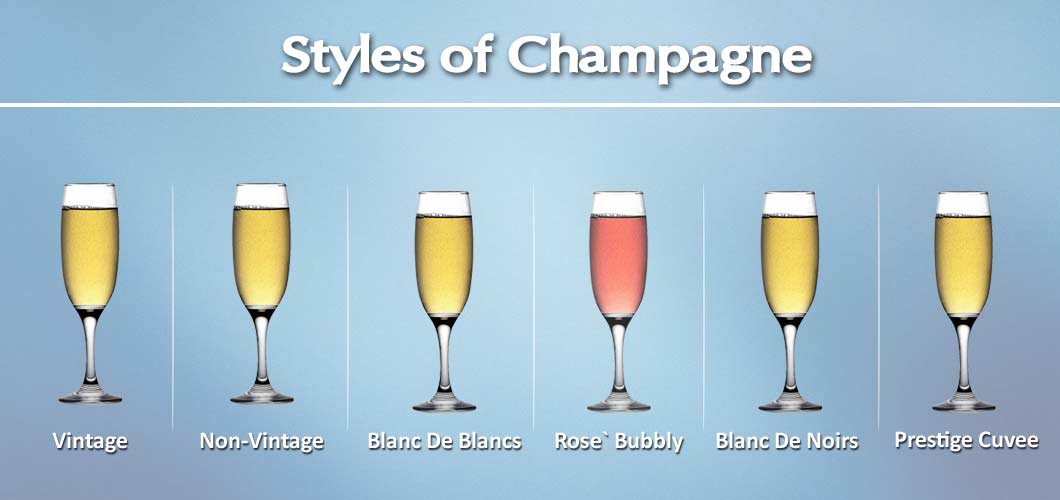
On a parting note, did you know that Dom Perignon only crafts vintage champagnes?
Non-Vintage: As the title suggests, champagnes that are not made in the vintage style, or, simply put, from grapes harvested from a single exceptional year, are referred to as “Non-Vintage” styles. This style is the most common, allowing a producer to establish its “house style” — a consistent and distinctive taste profile across its range of champagnes.
Non-vintage champagnes involve a blend of multiple vintages, offering a harmonious balance of flavors. To maintain the persistence of this taste and quality, producers often use their reserve wines (wines set aside for future blending).
Blanc De Blancs: Blanc De Blancs champagne is a unique style with a personality that is light and delicate. These champagnes are made exclusively with chardonnay grapes and tend to be favorites among bubbly lovers who prefer their champagnes with bright acidity, a citrusy feel and mineral notes.
You can spot such champagnes by their label, which reads “Blanc De Blancs” or “Chardonnay Brut”. Low-key champagne bottle price of this style can be high due to the limited production of chardonnay grapes in the Champagne region.
Blanc De Noirs: Now, this champagne style is crafted solely from black grape varieties, mainly Pinot Noir and Pinot Meunier. Even though the grapes are dark-skinned, champagnes tend to be white-tinted due to the gentle pressing process, which hinders color transfer. These champagnes are famed for their fuller body, red fruit flavors and a creamy texture.
Rosé Champagne: Known for their versatility in food pairing and setting the romantic vibes, rose champagnes are one of the most celebrated styles of champagnes. These champagnes are either produced by blending red and white grapes or by macerating the red-skinned grapes, resulting in an alluring blush pink hue with flavors of red fruits and a delightful fruitiness.
It’s also essential to understand that rose’s champagne bottle price is usually higher than the non-rose champagne because this style demands more attention and time and is labor-intensive.
Prestige Cuvee: Last but not the least, the prestige cuvee rules the pinnacle of champagne styles. This champagne style involves crafting champagne in limited numbers with the highest-quality grapes and longer aging in the cellars, resulting in unparalleled complexity and nuanced flavors.
The champagne bottle price of a Prestige Cuvee is usually hefty, and these champagnes also have higher aging potential, making them good investment attractions. One such notable prestige cuvee is La Grande Dame by Veuve Clicquot.
| Champagne Style | Uniqueness | Average Price ($) |
|---|---|---|
| Vintage | Single Harvest, Prolonged Aging, and More Complex | $40 - $60 |
| Non -Vintage | Blend Of Multiple Vintages, Harmonious, Reflects “House Style” | $70 - $150+ |
| Blanc De Blancs | Made Solely From Chardonnay Grapes - Light & Delicate | $30 - $50 |
| Blanc De Noirs | Made Solely From Black Grapes - Fuller Body & Creamy Feel | $50 - $100 |
| Rose | Pink Hue, Delightful Fruitiness ,Coarse Production | $40 - $80 |
| Prestige Cuvee | Highest-Quality Grapes Used, Prolonged Aging, Rare to Find, Complex | $50 - $80 |
Champagne Types As Per Their Sweetness Levels:
Thirdly, the classification of champagne types often considers the sweetness of each champagne, a characteristic primarily determined by the “dosage”. The dosage is a mixture of wine and sugar added to adjust the sweetness of a champagne.
Dosage is a crucial component in the champagne production process, influencing the sweetness level of the final sip, which can range from bone-dry to lusciously sweet. Understanding the various dosage levels is essential and can assist wine drinkers in selecting a bubbly with their preferred level of sweetness, striking the perfect balance, and finding that sweet spot between too dry and too sweet.
Here are the 7 names of champagne bottles with their respective dosages, with Brut Nature being the driest end and Doux being the sweetest end:
| Sweetness Level | Dosage/ Sugar Added | How's The Sweet Spot? | Average Price ($) |
|---|---|---|---|
| Brut Nature | No sugar added | Bone-Dry | $40 - $80 |
| Extra Brut | Upto 6 g/L | Too Dry to Notice Sweetness | $45 - $90 |
| Brut | 6-12 g/L | Most Popular Type, Slight Sweetness | $35 - $70 |
| Extra Dry | 12-17 g/L | Serves as a Great Aperitif | $30 - $65 |
| Dry | 17-32 g/L | Medium Sweet | $35 - $75 |
| Demi-Sec | 33-50 g/L | Sweet and Pairs Well With Desserts | $40 - $80 |
| Doux | More than 50 g/L | The Sweetest One | $45 - $90 |
Champagne Types As Per Champagne Bottle Sizes:
Lastly, we can segregate champagne types by champagne bottle sizes. Champagne bottles come in a wide range of capacities, from a mini easy to sip off to a gigantic one that takes a team to carry and finish drinking. Each of the champagne bottle sizes serves a different milieu, with small ones perfect for intimate gatherings and larger ones adding grandeur to special milestones.
Here are the 15 types of champagne bottle sizes with their respective capacities; the bigger the size, the higher the Champagne bottle price:
| Types of Champagne Bottle Sizes | Capacity | Average Price ($) |
|---|---|---|
| Piccolo | 187.6 ml | $10 - $20 |
| The Half Bottle / Demi | 375 ml | $20 - $40 |
| The Imperial Pint | 600 ml | $30 - $60 |
| The Standard Bottle | 750 ml | $40 - $80 |
| Magnum | 1.5 L | $80 - $150 |
| Jeroboam | 3 L | $200 - $400 |
| Rehoboam | 4.5 L | $350 - $700 |
| Methuselah | 6 L | $500 - $1,000 |
| Salmanazar | 9 L | $800 - $1,500 |
| Balthazar | 12 L | $1,000 - $2,000 |
| Nebuchadnezzar | 15 L | $1,500 - $3,000 |
| Melchior | 18 L | $2,000 - $4,000 |
| Solomon | 20 L | $2,500 - $5,000 |
| Sovereign | 25 L | $3,000 - $6,000 |
| Primat | 27 L | $3,500 - $7,000 |
| Melchizedek | 30 L | $4,000 - $8,000 |
After All These Vinous Layers, What Determines a Champagne Bottle Price?
To determine a champagne bottle price, it takes an elaborate chain of thought rather than a quick estimation. From the grapes used to the style employed to the bottle’s size, there are many factors that collectively imprint a price tag, be it a hefty or a pocket-friendly one.
Here are the key factors that determine prices for all champagne types:
Production Style: The style in which a bubbly is produced largely plays a role in determining its price. Most notably, vintage champagnes are more expensive than their non-vintage counterparts, as they have the impression of one single harvest and are aged for a longer period of time.
The rose champagnes are more labor-intensive and time-consuming; therefore, they are more expensive than the non-rose champagnes. Also, Prestige Cuvees are more expensive as they are crafted in a limited number using the highest-quality grapes and aged for a longer time in cellars.
Grape Varieties: A few grape varietals are more premium than the others: notably, chardonnay, and pinot noir. Any champagne with a dominant grape composition and proportion can grab higher price tags, such as Blanc de Blancs.
Dosage: Dosage can also play a vital role in determining the champagne bottle price. Champagnes with a higher sweetness level, such as Doux, can be more expensive than those with a lower sweetness level, such as Extra-Brut.
Bottles’s Size: The most obvious determinant of a champagne bottle's price is its capacity. The bigger the bottle’s size, the higher the price. You may leisurely spend over a Piccolo, but a methuselah will surely make you feel fickle about your spending.
Brand and Prestige: A few champagne houses have a long history of rich and exceptional winemaking craftsmanship, such as Krug or Armand De Brignac. When you consider buying champagne from these houses, you are expected to pay a higher price for their goodwill as well.
Aging: Champagnes that are aged for an extended period of time in the cellars are more expensive as they require more time, effort, and production costs.
Scarcity: Those champagnes that are produced in limited numbers are more rare and thus more expensive, be they exceptional vintages or limited editions.
Packaging: Any unique or ornate effort put into the making or packaging of the bottle can boost its price. For instance, Beau Joie has a slight tint of opulence, with metal suits armoring the bodies of the champagne bottles.
Final Thoughts On Champagne Types
With sincere effort, holistically, different types of champagne explained!
Now that you have uncovered the world of champagne and its multidimensional charm, you know that the shimmer that each champagne bottle emanates is far more layered than it initially appears. From the grape variety and the style employed to the level of sweetness and the champagne bottle’s size, each bubbly possesses a unique personality all its own.
The stunning yet unsettling part is that each bit overlaps with the others; no single factor can define champagne types as they keep rushing in countless streams of complexity.
How many types of champagne are there? — Galaxy-Sized!
So, whether you are sipping in solitude or tasting a special moment, remember that champagne isn’t just a drink; it’s a world of bubbles, grapes, and endless possibilities. Cheers!
Looking for a Bubbly Adventure? Explore Top Champagne Brands
Frequently Asked Questions About Types Of Champagne:
Champagne is undoubtedly classified as a sparkling wine, originating from the Champagne region of France. Its production involves a meticulous process known as methode champenoise, setting it apart from traditional wines.
Q: Is champagne a type of wine?
Indeed, champagne is a refined sub type of sparkling wine. What sets it apart is not only the effervescence but also its distinctive production method, where the secondary fermentation occurs in the bottle, resulting in its characteristic bubbles.
Q: How many types of champagne are there?
There are various types of champagne based on sweetness, grape types, and aging. The sweetness levels range from Brut to Doux, while grape varietals include Chardonnay, Pinot Meunier, and Pinot Noir. Aging methods like non-vintage, vintage, and prestige cuvees contribute to the diverse profiles of champagne.
Q: Why is champagne called Brut?
The term “Brut” in champagne signifies a dry taste profile (6–12 g/L), indicating minimal residual sugar. This designation appeals to connoisseurs seeking a crisp and less sweet flavor, making it a popular choice.
Q: Is Rose a champagne?
Rose champagne stands as a distinct category, showcasing a captivating pink hue derived from a brief encounter with grape skins during the winemaking process. Its unique color and delicate, fruity flavor profile contribute to its popularity.
Q: Is champagne sweet or bitter?
Champagne is not typically bitter and has a sweetness that spans a spectrum. The main sweetness categories are: Brut Nature (bone-dry), Extra Brut (very dry), Brut (dry), Extra Dry (slightly sweet), Sec (medium sweet), Demi-Sec (sweet) and Doux (very sweet). It’s essential to check the specific type or label to determine the sweetness level of the champagne you’re considering.
Q: What type of champagne is sweet?
Demi-Sec and Doux champagnes are celebrated for their sweet characteristics, making them ideal choices for those with a preference for sweetness.
Q: What type of champagne is best?
Determining the best champagne is subjective and depends on individual preferences. However, Brut, with its versatile and widely appealing dryness, along with vintage selections renowned for their unique qualities, often stand out as popular choices.
Q: Which are the most expensive types of champagne?
Expensive champagne types encompass a range, including vintage champagnes, Prestige Cuvees, and limited editions. These selections are esteemed for their exceptional quality, distinctiveness, and the craftsmanship involved in their production.
Q: Which are the various types of champagne bottles?
Champagne bottle types are defined by their respective sizes, including Mini Bottle (187 ml), Half Bottle (375 ml), Standard Bottle (750 ml), Magnum (1.5 L), Jeroboam (3 L), Methuselah (6 L), Salmanazar (9 L), Balthazar (12 L), and Nebuchadnezzar (15 L).
Champagne Bottles | Personalized Champagne Bottles | Hand Painted Champagne Bottles | Magnum Size Gifts | Champagne Rose | Champagne Gift Basket | Birthday Champagne Gifts | Anniversary Champagne Gifts | Wedding Champagne Gifts | Champagne Gifts for Christmas | Champagne Gifts for Thanksgiving | Champagne Holiday Gifts | Same day Champagne Delivery in Washington DC | Same day Champagne Delivery in Virginia | Same day Champagne Delivery in Maryland||




